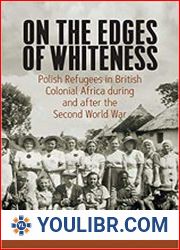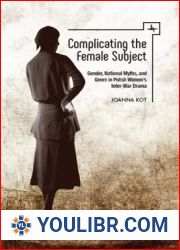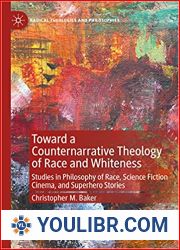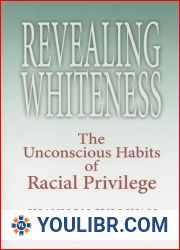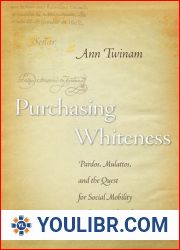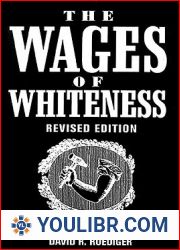
BOOKS - MILITARY HISTORY - On the Edges of Whiteness Polish Refugees in British Colon...

On the Edges of Whiteness Polish Refugees in British Colonial Africa during and after the Second World War
Author: Jochen Lingelbach
Year: 2020
Format: PDF
File size: 3,1 MB
Language: ENG

Year: 2020
Format: PDF
File size: 3,1 MB
Language: ENG

Today we know these refugees as the forgotten victims of the Holocaust and World War II but at the time they were simply referred to as “displaced persons” or DP's On the Edges of Whiteness explores how these Poles adapted to their new surroundings and created lives for themselves in this strange and foreign land. The Plot of the Book On the Edges of Whiteness tells the story of Polish Refugees who fled to British Colonial Africa during and after the Second World War. The book focuses on the challenges they faced in adapting to their new surroundings and creating a life for themselves in a foreign land. The author examines how these refugees navigated the complexities of colonialism, racism, and cultural differences to establish a sense of belonging and purpose in their new homes. The book begins with an overview of the historical context of the refugee crisis, highlighting the devastating impact of the Second World War on Poland and the subsequent displacement of thousands of Poles. It then delves into the experiences of individual refugees, showcasing their diverse backgrounds, skills, and motivations for leaving Europe. Through personal narratives, historical documents, and oral histories, the author paints a vivid picture of the daily struggles, triumphs, and tragedies of these forgotten victims of the Holocaust and World War II. As the refugees arrived in Africa, they encountered a multitude of challenges, from harsh climates and unfamiliar cultures to language barriers and discrimination. The author explores how they overcame these obstacles through ingenuity, resourcefulness, and determination.
Сегодня мы знаем этих беженцев как забытых жертв Холокоста и Второй мировой войны, но в то время их просто называли «перемещенными лицами» или DP's On the Edge of Whiteness исследует, как эти поляки адаптировались к своему новому окружению и создали себе жизнь на этой странной и чужой земле. Сюжет книги «На краях белизны» рассказывает о польских беженцах, которые бежали в британскую колониальную Африку во время и после Второй мировой войны. Книга посвящена проблемам, с которыми они столкнулись при адаптации к своему новому окружению и создании жизни для себя в чужой стране. Автор рассматривает, как эти беженцы ориентировались на сложности колониализма, расизма и культурных различий, чтобы установить чувство принадлежности и цели в своих новых домах. Книга начинается с обзора исторического контекста кризиса беженцев, подчеркивая разрушительные последствия Второй мировой войны для Польши и последующее перемещение тысяч поляков. Затем он углубляется в опыт отдельных беженцев, демонстрируя их разнообразное происхождение, навыки и мотивы для отъезда из Европы. Через личные повествования, исторические документы, и устные истории, автор рисует яркую картину повседневной борьбы, торжествует, и трагедии этих забытых жертв Холокоста и Второй мировой войны II.As беженцы прибыли в Африку, они столкнулись с множеством проблем, от сурового климата и незнакомых культур до языковых барьеров и дискриминации. Автор исследует, как они преодолевали эти препятствия через изобретательность, находчивость и решительность.
Aujourd'hui, nous connaissons ces réfugiés comme des victimes oubliées de l'Holocauste et de la Seconde Guerre mondiale, mais à l'époque ils étaient simplement appelés « personnes déplacées » ou DP's On the Edge of Whiteness explore comment ces Polonais se sont adaptés à leur nouvel environnement et se sont créés une vie sur cette terre étrange et étrangère. L'histoire du livre « Sur les bords de la blancheur » parle des réfugiés polonais qui ont fui vers l'Afrique coloniale britannique pendant et après la Seconde Guerre mondiale. livre traite des problèmes qu'ils ont rencontrés pour s'adapter à leur nouvel environnement et créer une vie pour eux-mêmes dans un pays étranger. L'auteur examine la façon dont ces réfugiés se sont penchés sur la complexité du colonialisme, du racisme et des différences culturelles afin d'établir un sentiment d'appartenance et un but dans leurs nouveaux foyers. livre commence par un aperçu du contexte historique de la crise des réfugiés, soulignant les effets dévastateurs de la Seconde Guerre mondiale sur la Pologne et le déplacement ultérieur de milliers de Polonais. Il approfondit ensuite l'expérience des réfugiés individuels en montrant leurs origines, leurs compétences et leurs motivations variées pour quitter l'Europe. À travers des récits personnels, des documents historiques et des histoires orales, l'auteur dresse un tableau brillant de la lutte quotidienne, triomphe, et les tragédies de ces victimes oubliées de l'Holocauste et de la Seconde Guerre mondiale II.As réfugiés sont arrivés en Afrique, ils ont été confrontés à de nombreux problèmes, du climat rigoureux et des cultures inconnues aux barrières linguistiques et à la discrimination. L'auteur étudie comment ils ont surmonté ces obstacles par l'ingéniosité, l'ingéniosité et la détermination.
Hoy conocemos a estos refugiados como víctimas olvidadas del Holocausto y de la Segunda Guerra Mundial, pero en ese momento simplemente se les llamaba «desplazados» o DP's On the Edge of Whiteness explora cómo estos polacos se adaptaron a su nuevo entorno y se crearon vidas en esta extraña y extraña tierra. La trama del libro «Al borde de la blancura» cuenta la historia de los refugiados polacos que huyeron al África colonial británica durante y después de la Segunda Guerra Mundial. libro trata de los problemas que han encontrado para adaptarse a su nuevo entorno y crear vida para ellos mismos en un país extranjero. autor considera cómo estos refugiados se han orientado hacia las complejidades del colonialismo, el racismo y las diferencias culturales para establecer un sentido de pertenencia y objetivos en sus nuevos hogares. libro comienza con una revisión del contexto histórico de la crisis de refugiados, destacando los devastadores efectos de la Segunda Guerra Mundial en Polonia y el posterior desplazamiento de miles de polacos. A continuación, profundiza en la experiencia de los refugiados individuales, demostrando sus diversos orígenes, habilidades y motivaciones para salir de . A través de narraciones personales, documentos históricos, e historias orales, el autor dibuja una imagen vívida de la lucha cotidiana, triunfa, y las tragedias de estas víctimas olvidadas del Holocausto y la Segunda Guerra Mundial II.As los refugiados llegaron a África, se enfrentaron a muchos desafíos, desde el clima duro y las culturas desconocidas hasta las barreras lingüísticas y la discriminación. autor explora cómo han superado estos obstáculos a través del ingenio, el ingenio y la determinación.
Hoje conhecemos estes refugiados como vítimas esquecidas do Holocausto e da Segunda Guerra Mundial, mas, na época, eles eram apenas chamados de «pessoas deslocadas» ou «DP's On the Edge of Whiteness», explorando como estes polacos se adaptaram ao seu novo ambiente e criaram suas vidas nesta terra estranha e estrangeira. A história de «À beira da Belíssima» fala de refugiados poloneses que fugiram para a África colonial britânica durante e depois da Segunda Guerra Mundial. O livro trata dos problemas que eles enfrentaram ao se adaptarem ao seu novo ambiente e criar uma vida para si mesmos em um país estrangeiro. O autor considera como esses refugiados se concentraram nas complexidades do colonialismo, do racismo e das diferenças culturais para estabelecer o sentimento de pertencimento e propósito em seus novos lares. O livro começa com uma revisão do contexto histórico da crise de refugiados, enfatizando os efeitos devastadores da Segunda Guerra Mundial para a Polônia e a consequente movimentação de milhares de poloneses. Depois, aprofundou-se na experiência dos refugiados individuais, mostrando suas diversas origens, habilidades e motivações para deixar a . Através de narrativas pessoais, documentos históricos, e histórias orais, o autor traça uma imagem brilhante da luta diária, triunfando, e as tragédias dessas vítimas esquecidas do Holocausto e da Segunda Guerra Mundial II.As refugiados chegaram à África, enfrentando muitos desafios, desde o clima severo e culturas desconhecidas até barreiras linguísticas e discriminação. O autor investiga como eles superaram esses obstáculos através da engenhosidade, da engenhosidade e da determinação.
Oggi conosciamo questi rifugiati come le vittime dimenticate dell'Olocausto e della Seconda Guerra Mondiale, ma all'epoca li chiamavano semplicemente "sfollati" o'PD's On the Edge of Whiteness "studia come questi polacchi si adattarono al loro nuovo ambiente e si crearono una vita su questa terra strana e straniera. La trama del libro «Ai margini del bianco» parla di rifugiati polacchi fuggiti nell'Africa coloniale britannica durante e dopo la seconda guerra mondiale. Il libro parla dei problemi che hanno affrontato nell'adattarsi al loro nuovo ambiente e creare una vita per se stessi in un paese straniero. L'autore considera come questi rifugiati si siano concentrati sulle complessità del colonialismo, del razzismo e delle differenze culturali per stabilire il senso di appartenenza e di scopo nelle loro nuove case. Il libro inizia con una panoramica del contesto storico della crisi dei rifugiati, sottolineando gli effetti devastanti della seconda guerra mondiale sulla Polonia e il conseguente spostamento di migliaia di polacchi. Poi approfondisce l'esperienza dei singoli rifugiati, dimostrando le loro diverse origini, competenze e motivi per lasciare l'. Attraverso narrazioni personali, documenti storici, e storie orali, l'autore dipinge un quadro vivace della lotta quotidiana, trionfa, e le tragedie di queste vittime dimenticate dell'Olocausto e della seconda guerra mondiale, i rifugiati II.As sono arrivati in Africa, hanno affrontato molti problemi, dal clima duro e culture sconosciute alle barriere linguistiche e alla discriminazione. L'autore indaga come hanno superato questi ostacoli attraverso l'ingegno, l'ingegno e la determinazione.
Heute kennen wir diese Flüchtlinge als vergessene Opfer des Holocaust und des Zweiten Weltkriegs, aber damals wurden sie einfach "Displaced Persons'genannt oder DP 's On the Edge of Whiteness erforscht, wie sich diese Polen an ihre neue Umgebung angepasst und sich ein ben in diesem fremden und fremden Land aufgebaut haben. Die Handlung des Buches „An den Rändern der Weißheit“ erzählt von polnischen Flüchtlingen, die während und nach dem Zweiten Weltkrieg ins britische Kolonialafrika flohen. Das Buch widmet sich den Herausforderungen, denen sie bei der Anpassung an ihre neue Umgebung und der Schaffung eines bens für sich selbst in einem fremden Land gegenüberstanden. Der Autor untersucht, wie sich diese Flüchtlinge an der Komplexität von Kolonialismus, Rassismus und kulturellen Unterschieden orientierten, um ein Zugehörigkeitsgefühl und einen Zweck in ihrer neuen Heimat zu etablieren. Das Buch beginnt mit einem Überblick über den historischen Kontext der Flüchtlingskrise und hebt die verheerenden Auswirkungen des Zweiten Weltkriegs auf Polen und die anschließende Vertreibung Tausender Polen hervor. Anschließend vertieft er sich in die Erfahrungen einzelner Geflüchteter und zeigt ihre vielfältigen Hintergründe, Fähigkeiten und Motive für die Ausreise aus . Durch persönliche Erzählungen, historische Dokumente und mündliche Geschichten zeichnet der Autor ein lebendiges Bild von den täglichen Kämpfen, Triumphen und Tragödien dieser vergessenen Opfer des Holocaust und des Zweiten Weltkriegs II. Als Flüchtlinge nach Afrika kamen, standen sie vor vielen Herausforderungen, von rauem Klima und unbekannten Kulturen bis hin zu Sprachbarrieren und Diskriminierung. Der Autor untersucht, wie sie diese Hindernisse durch Einfallsreichtum, Einfallsreichtum und Entschlossenheit überwunden haben.
Dziś znamy tych uchodźców jako zapomniane ofiary Holokaustu i II wojny światowej, ale w tym czasie po prostu nazywano ich „przesiedleńcami” lub DP's On the Edge of Whiteness bada, jak Polacy przystosowali się do nowego środowiska i stworzyli dla siebie życie w tej dziwnej i obcej ziemi. Fabuła książki „Na krawędziach białości” opowiada o polskich uchodźcach, którzy uciekli do brytyjskiej Afryki kolonialnej w czasie i po II wojnie światowej. Autor przygląda się, jak ci uchodźcy nawigowali po złożonościach kolonializmu, rasizmu i różnic kulturowych, aby ustalić poczucie przynależności i celu w swoich nowych domach. Książka rozpoczyna się od przeglądu historycznego kontekstu kryzysu uchodźczego, podkreślając niszczycielskie skutki II wojny światowej dla Polski i późniejszego wysiedlenia tysięcy Polaków. Następnie zagłębia się w doświadczenia poszczególnych uchodźców, pokazując ich zróżnicowane pochodzenie, umiejętności i motywacje do opuszczenia Europy. Poprzez osobiste narracje, dokumenty historyczne i historie ustne autor maluje żywy obraz codziennych zmagań, triumfów i tragedii tych zapomnianych ofiar Holokaustu i II wojny światowej. Uchodźcy przybyli do Afryki, napotkali wiele problemów, z surowych klimatów i nieznane kultury barier językowych i dyskryminacji Autor bada, jak pokonują te przeszkody poprzez pomysłowość, zaradność i determinację.
היום אנחנו מכירים את הפליטים האלה כקורבנות נשכחים של השואה ומלחמת העולם השנייה, אבל באותה תקופה הם נקראו פשוט ”עקורים” או DP's On the Edge of Whiteness חוקר איך הפולנים האלה הסתגלו לסביבתם החדשה ויצרו לעצמם חיים בארץ זרה ומוזרה זו. עלילת הספר "On the Enges of Whiteness'מספרת על פליטים פולנים שברחו לאפריקה הקולוניאלית הבריטית במהלך מלחמת העולם הראשונה ולאחריה. המחבר בוחן כיצד פליטים אלה ניווטו את מורכבות הקולוניאליזם, הגזענות וההבדלים התרבותיים כדי ליצור תחושת שייכות ומטרה בבתיהם החדשים. הספר פותח בסקירת ההקשר ההיסטורי של משבר הפליטים, ומדגיש את ההשלכות ההרסניות של מלחמת העולם השנייה על פולין ואת העתקתם של אלפי פולנים. לאחר מכן הוא מתעמק בחוויותיהם של פליטים בודדים ומוכיח את רקעיהם המגוונים, כישוריהם ומניעיהם לעזוב את אירופה. באמצעות נרטיבים אישיים, מסמכים היסטוריים והיסטוריים בעל-פה, הסופר מצייר תמונה חיה של מאבק יומיומי, נצחונות, והטרגדיות של הקורבנות הנשכחים של השואה ומלחמת העולם השנייה, הפליטים הגיעו לאפריקה, הם התמודדו עם בעיות רבות, החל מאקלים קשה ותרבויות לא מוכרות ועד מחסומי שפה ואפליה. המחבר בוחן כיצד התגברו על מכשולים אלה באמצעות כושר המצאה, תושייה ונחישות.''
Bugün bu mültecileri Holokost ve II. Dünya Savaşı'nın unutulmuş kurbanları olarak biliyoruz, ancak o zamanlar basitçe "yerinden edilmiş kişiler'olarak adlandırılıyorlardı ya da DP'nin Beyazlığın Kenarında, bu Polonyalıların yeni çevrelerine nasıl adapte olduklarını ve bu garip ve yabancı topraklarda kendileri için bir yaşam yarattıklarını araştırıyor. "Beyazlığın Kenarlarında" kitabının konusu, II. Dünya Savaşı sırasında ve sonrasında İngiliz sömürge Afrika'sına kaçan Polonyalı mültecileri anlatıyor. Kitap, yeni çevrelerine uyum sağlamak ve yabancı bir ülkede kendileri için bir yaşam yaratmak için karşılaştıkları zorluklara odaklanıyor. Yazar, bu mültecilerin yeni evlerinde aidiyet ve amaç duygusu oluşturmak için sömürgecilik, ırkçılık ve kültürel farklılıkların karmaşıklıklarını nasıl yönlendirdiklerini inceliyor. Kitap, mülteci krizinin tarihsel bağlamını gözden geçirerek, II. Dünya Savaşı'nın Polonya üzerindeki yıkıcı etkilerini ve ardından binlerce Polonyalı'nın yerinden edilmesini vurgulayarak başlıyor. Daha sonra bireysel mültecilerin deneyimlerini inceleyerek, farklı geçmişlerini, becerilerini ve Avrupa'yı terk etme motivasyonlarını gösteriyor. Kişisel anlatılar, tarihi belgeler ve sözlü tarihler aracılığıyla yazar, günlük mücadelenin, zaferlerin ve Holokost'un ve II. Dünya Savaşı'nın unutulmuş kurbanlarının trajedilerinin canlı bir resmini çiziyor. mülteciler Afrika'ya geldi, sert iklimlerden ve yabancı kültürlerden dil engellerine ve ayrımcılığa kadar birçok sorunla karşı karşıya kaldılar. Yazar, bu engelleri ustalık, beceriklilik ve kararlılıkla nasıl aştıklarını araştırıyor.
اليوم نعرف هؤلاء اللاجئين كضحايا منسيين للمحرقة والحرب العالمية الثانية، ولكن في ذلك الوقت كانوا يطلق عليهم ببساطة «النازحون» أو يستكشفون موانئ دبي على حافة البياض كيف تكيف هؤلاء البولنديون مع بيئتهم الجديدة وخلقوا حياة لأنفسهم في هذه الأرض الغريبة والغريبة. تحكي حبكة كتاب «على حواف البياض» عن اللاجئين البولنديين الذين فروا إلى إفريقيا الاستعمارية البريطانية أثناء الحرب العالمية الثانية وبعدها. ويركز الكتاب على التحديات التي واجهوها في التكيف مع محيطهم الجديد وخلق حياة لأنفسهم في أرض أجنبية. وينظر صاحب البلاغ في الكيفية التي تجاوز بها هؤلاء اللاجئون تعقيدات الاستعمار والعنصرية والاختلافات الثقافية لإثبات الشعور بالانتماء والهدف في ديارهم الجديدة. يبدأ الكتاب باستعراض السياق التاريخي لأزمة اللاجئين، وتسليط الضوء على الآثار المدمرة للحرب العالمية الثانية على بولندا وما تلاها من نزوح آلاف البولنديين. ثم يتعمق في تجارب اللاجئين الأفراد، ويظهر خلفياتهم المتنوعة ومهاراتهم ودوافعهم لمغادرة أوروبا. من خلال الروايات الشخصية والوثائق التاريخية والتاريخ الشفوي، يرسم المؤلف صورة حية للنضال اليومي والانتصارات ومآسي هؤلاء الضحايا المنسيين للمحرقة والحرب العالمية الثانية. وصل اللاجئون إلى إفريقيا، وواجهوا العديد من المشاكل، من المناخات القاسية والثقافات غير المألوفة إلى حواجز اللغة والتمييز يستكشف المؤلف كيف تغلبوا على هذه العقبات من خلال البراعة وسعة الحيلة والتصميم.
오늘날 우리는이 난민들을 홀로 코스트와 제 2 차 세계 대전의 잊혀진 희생자로 알고 있지만, 그 당시에는 단순히 "실향민" 또는 DP의 백색도 가장자리라고 불렀습니다. 이 이상하고 외계인 땅에서 자신을 위해. "백색의 가장자리에" 라는 책의 음모는 제 2 차 세계 대전 중과 후에 영국 식민지 아프리카로 도망 간 폴란드 난민에 대해 알려줍니다. 이 책은 새로운 환경에 적응하고 자신의 삶을 만드는 데 직면 한 어려움에 중점을 둡니다. 외국 땅. 저자는이 난민들이 식민지주의, 인종 차별 및 문화적 차이의 복잡성을 탐색하여 새로운 가정에 소속감과 목적을 확립하는 방법을 살펴 봅니다. 이 책은 난민 위기의 역사적 맥락을 검토하여 제 2 차 세계 대전이 폴란드에 미치는 엄청난 영향과 그에 따른 수천 개의 폴란드 이동을 강조합니다. 그런 다음 개별 난민의 경험을 탐구하여 유럽을 떠나는 다양한 배경, 기술 및 동기를 보여줍니다. 저자는 개인적인 이야기, 역사적 문서 및 구술 역사를 통해 홀로 코스트와 제 2 차 세계 대전 II의 잊혀진 희생자들의 일상적인 투쟁, 승리 및 비극에 대한 생생한 그림을 그립니다. 언어 장벽과 차별에 익숙하지 않은 문화. 저자는 독창성, 수완과 결단력을 통해 어떻게 이러한 장애물을 극복했는지 탐구합니다.
今日、私たちはこれらの難民をホロコーストと第二次世界大戦の忘れられた犠牲者として知っていますが、当時、彼らは単に「避難民」またはDP's On the Edge of Whiteと呼ばれていました。第二次世界大戦中と第二次世界大戦後にイギリスの植民地アフリカに逃れてきたポーランド難民が、自分たちの新しい環境に適応し、異国の地で自分たちのために人生を創造するために直面した課題に焦点を当てている。著者は、これらの難民がどのように植民地主義、人種差別、文化の違いの複雑さをナビゲートし、彼らの新しい家に帰属と目的の感覚を確立したかを見ています。この本は、難民危機の歴史的文脈を見直し、第二次世界大戦のポーランドへの破壊的な影響と、その後の数千人のポーランド人の移動を強調することから始まる。その後、個々の難民の経験を掘り下げ、ヨーロッパを離れるための多様な背景、スキル、動機を示します。著者は、個人的な物語、歴史文書、口頭歴史を通して、ホロコーストと第二次世界大戦の忘れ去られた犠牲者の日常的な闘争、勝利、悲劇を鮮やかに描き、アフリカに難民が到着し、厳しい気候や慣れない文化から言語の障壁や差別まで、多くの問題に直面しました。著者は、彼らが創意工夫、機知と決意を通してこれらの障害を克服する方法を探求します。







